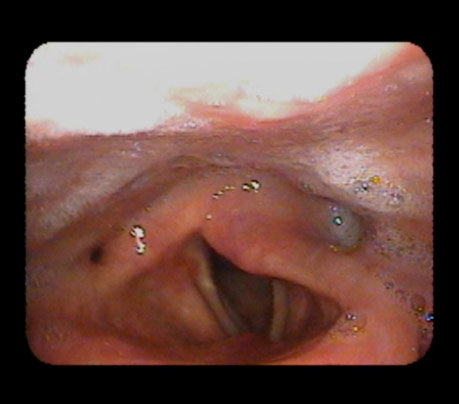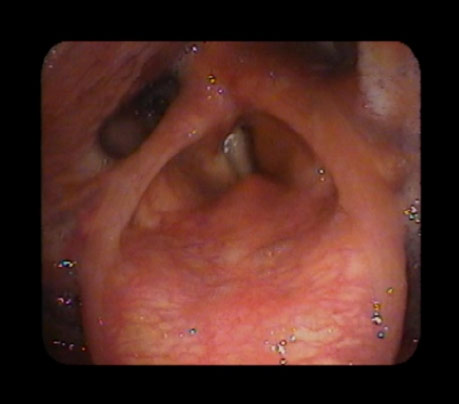what is thyroplasty?
|
Due to vocal cord paralysis of the left vocal cord (on the right of the image), this patient was unable to project and could only speak for 1-2 seconds at a time. Voice quality was poor, as demonstrated in the video.
|
After thyroplasty, the vocal cords are in contact and the patient's vocal quality is significantly improved. He is now able to speak without breathiness and speak in complete sentences.
|
Thyroplasty is a procedure in which an implant is placed in the larynx (voice box) alongside the vocal cord. This implant pushes the vocal cord closer to the middle. Both vocal cords need to touch in the middle in order to have a strong voice. The implant allows a paralyzed or weak vocal cord to reach the midline.


why would i need a thyroplasty?
Thyroplasty is done in patients who have a vocal cord paralysis or severe weakness. This procedure is done after the surgeon is sure that the paralysis will not recover. Unlike a vocal injection, these results are permanent and no further procedures are needed until the weakened vocal cord thins over time. Should it be needed, however, the implant is removable and the procedure fully reversible.
what are other treatment options?
Patients are usually offered vocal injections instead of a thyroplasty. However, when the vocal cord is very weak or totally paralyzed, a thyroplasty will give a better result. Surgeons who are not experienced in this procedure often get poor results.
Voice therapy can alleviate symptoms in patients who have a mild vocal cord weakness (paresis). It is often insufficient in those who have a significant vocal cord weakness or total paralysis.
how is thyroplasty done?
Thyroplasty is performed through a neck incision. This small (1 inch) incision is used to approach the larynx (voice box). A small hole of cartilage is removed from the outer larynx to allow the implant to be placed. The implant is then placed to the side of the vocal cord while the vocal cords are visualized from inside, to ensure that the vocal cord is in a good final position. When the position is confirmed, the hole in the cartilage is closed and the incision is closed. The patient will often have hoarse voice for a week as the swelling subsides.


